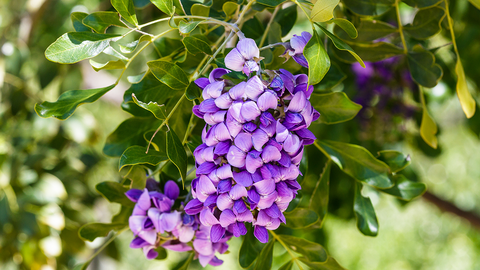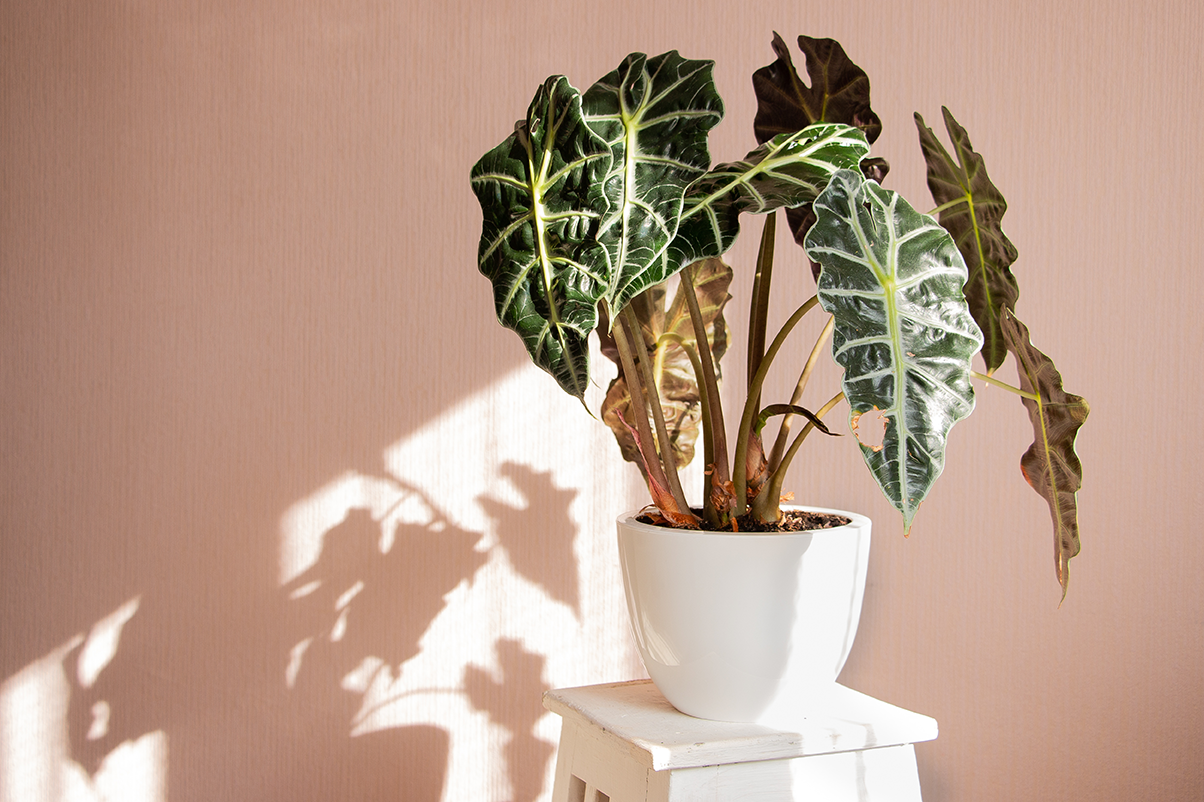Ahh, the Texas outdoors: beautiful, lush, and green. But, heads up: some of our most common local plants can pose dangers 🚫 to your beloved dog and cat.
Poisonous plants are very common in Central Texas. But, knowing the signs of plant toxicity and which flora to avoid will help you enjoy your native landscape with peace of mind.
Let's chat about toxic plant facts and common symptoms.
 Plant Toxicity in Pets: Signs & Symptoms
Plant Toxicity in Pets: Signs & Symptoms
Nine out of every ten plant poisonings for pets happen at home via gardens and household plants. The survival rate for ingesting specific toxic plants can be low for both cats and dogs, reaching as low as 50% (Sago Palm).
Potential dangers vary from mild symptoms to serious illness to death and severity depends on the quantity of toxins ingested. Both Texas A&M and the FDA report several factors that lead to the degree of toxicity, such as:
- The type of animal (cat, dog, or other species) that ate the item
- How much the animal ate
- Which part of the plant was eaten (bulb, seed, seed pod, leaf, or flower)
Know the signs of plant toxicity in pets.
Common Symptoms of plant toxicity in pets include:
- Excessive drooling
- Difficulty breathing
- Vomiting
- Diarrhea
- Extreme fatigue.
Please contact or visit your veterinarian or call poison control if your pet is experiencing any of these harmful side effects. These symptoms should not go unchecked and could be caused by ingesting toxic plants.
15 Common Plants Pets Should Avoid
#1 Sago Palm

Locations: Highly popular landscaping plant in Central Texas for housing and commercial properties.
Watch out: Ring the alarm because ALL parts of the Sago Palm are highly toxic. Check for dead or fallen leaves and palms on the ground at parks, restaurants, and patio bars.
Toxicity level: 5/5 (dogs)
Symptoms: Vomiting, diarrhea, and liver failure. Without immediate supportive and aggressive care, ingestion of any part of this plant can be fatal.
#2 Aloe Vera

Locations: Popular houseplant with healing properties for humans.
Watch out: Great for your sunburn, terrible for your pup and kitten. All parts are toxic.
Toxicity level: 3/5 (dogs and cats)
Symptoms: Vomiting, diarrhea depression, anorexia tremors, change in urine color
#3 Lilies

Locations: Popular flowers in floral arrangements and landscaping in Central Texas - varieties include: Peace Lily, Day Lily, Lily of the Valley, and Tiger Lily.
Watch out: 2319! We have a 2319! Pollen can rub off easily and attach to your cat. All parts of this plant are toxic, so don't let it stick to your furry feline friend.
Toxicity level: 5/5 (cats)
Symptoms: Vomiting, diarrhea, and kidney failure. Without immediate supportive and aggressive care, ingestion of any part of this plant can be fatal.
#4 Mushrooms

Locations: Summertime fungus in yards and pastures.
Watch out: Carefully curated 'shrooms in your coffee may help keep you centered, but unless your pup is a trained truffle hunter, don't let him experiment with wild 'shrooms. Keep your lawn manicured and these toxic fungi away from all pets.
Toxicity level: 5/5 (dogs and cats)
Symptoms: Neurological symptoms like uncoordinated walking and excessive drooling. Can result in kidney failure and liver failure.
#5 Oleander

Locations: Ornamental landscaping shrub for parks, streets, and neighborhoods
Watch out: This is probably the most common side walk plant in Central Texas. They are beautiful, but toxic! All parts of this flowering shrub aren't safe.
Toxicity level: 4/5 (dogs and cats)
Symptoms: Low heart rate and weakness. Significant ingestion can be fatal without supportive care.
#6 English Ivy

Locations: Common houseplant and ornamental landscaping plant for the walls of malls, parks, streets, and neighborhoods.
Watch out: With so many varieties, keep all ivies out of reach if your pet is a nibbler, as all parts are toxic.
Toxicity level: 2/5 (dogs and cats)
Symptoms: Intestinal symptoms include vomiting and diarrhea. Rarely leads to severe symptoms.
#6 Texas Mountain Laurel

Locations: Popular ornamental landscaping tree for parks, streets, and neighborhoods.
Watch out: Beautiful colors but dangerous seeds. Flower, seeds, and seed pods are toxic!
Toxicity level: 4/5 (dogs and cats)
Symptoms: Lethargy, drooling, uncoordinated walking, and a decreased heart rate. Symptoms can be progressive.
#8 Wisteria

Locations: Ornamental landscaping tree for parks, streets, and neighborhoods
Watch out: Similar to Texas Mountain Laurel but with drooping flowering vines. Flower, seeds, and seed pods are toxic!
Toxicity level: 3/5 (dogs and cats)
Symptoms: Lethargy, drooling, uncoordinated walking, and a decreased heart rate. Symptoms can be progressive.
#9 Morning Glory

Locations: Brightly colored, landscaping flower for gardens found in malls, parks, streets, and neighborhoods. All parts are toxic.
Watch out: 100% not glorious - do not let your pet eat these flowers. Seeds and seed pods are toxic.
Toxicity level: 2/5 (dogs)
Symptoms: Lethargy and vomiting. Usually mild symptoms.
#10 Pothos

Locations: Highly popular indoor and household handing plant for homes and restaurants.
Watch out: The one houseplant we can manage to keep alive does not take kindly to curious fauna. All parts of this vine are toxic! Keep these away and out of your pet's reach.
Toxicity level: 3/5 (dogs and cats)
Symptoms: Intestinal symptoms include vomiting and diarrhea and the worst case scenario is liver failure.
#11 Monstera

Locations: Highly popular, large indoor potted plant for homes and restaurants
Watch out: Beautiful, but better avoided if you have a salad-loving dog or cat. All parts are toxic.
Toxicity level: 3/5 (dogs and cats)
Symptoms: Oral irritation, pain and swelling of mouth, tongue and lips, excessive drooling, vomiting, and difficulty swallowing
#12 Fiddle Leaf Fig (Rubber Tree)

Locations: Highly popular indoor potted plant for homes and restaurants
Watch out: If you can keep a fiddle leaf alive, hats off to you. Just make sure your pets steer clear. All parts of this plant are toxic - especially the sap.
Toxicity level: 4/5 (dogs and cats)
Symptoms: Oral irritation, pain and swelling of mouth, tongue and lips, excessive drooling, vomiting, and difficulty swallowing
#13 Alocasia

Locations: Also known as Elephant Ear! Highly popular indoor potted plant for homes and restaurants
Watch out: While they don't look delicious to us, pets gravitate towards these large leafy plants. Toxicity can happen in just a few nibbles on this plant!
Toxicity level: 3/5 (dogs and cats)
Symptoms: Oral irritation, swelling of airways, coughing, excessive drooling, vomiting, incoordination, and difficulty swallowing
#14 Chrysanthemum

Locations: Popular in floral arrangements
Watch out: If not safe to eat why do they look so tasty?! All parts of this plant are toxic - especially the flower heads.
Toxicity level: 5/5 (dogs and cats)
Symptoms: Oral irritation, swelling of airways, coughing, excessive drooling, vomiting, incoordination, and difficulty swallowing
#15 Lantana

Locations: Usually found in fields or in landscaping
Watch out: This shrub loves the heat (good for them right?). They can be found flowering in many colors, but the most common variation is pink and yellow. All parts of this plant are toxic - especially the flower heads.
Toxicity level: 5/5 (dogs and cats)
Symptoms: Weakness, appetite loss, bloody diarrhea, paralysis, and jaundice (yellowing of the skin and eyes)
Have these plants already?

Don't fret. First, ID the plant's toxicity level.
Toxicity Level 4 and up: Reevaluate where these plants are located in and outside of your home. Level 4 and up plants are highly toxic to pets and it's better to be safe than sorry. The best option is to rid these plants from your space - especially Lilies, Lantana, and Sago Palms.
Toxicity Level 3 or below: keep it out of reach from your pet(s). Monitor these plants frequently to check for chew marks.
What if your pet has ingested any of these toxic plants?
If your pet has or is experiencing any symptoms listed above from any of these listed plants, react quickly and stay calm. Next, follow through these two steps:
First, take a sample of the plant.
Second, contact your local veterinarian or call poison control at:
- Pet Poison Helpline, 855-764-7661, http://www.petpoisonhelpline.com
- ASPCA Animal Poison Control Center, 888-426-4435, www.aspca.org/pet-care/animal-poison-control
It's important to note that the information contained in our plant lists is not all-inclusive, but a most common encountered plants guide.
For a full list and to search the plants in your home, check out ASPCA's Poisonous Plants List.
Need more pet advice?
Tomlinson's is your go-to pet supply store for natural, healthy pet products in Austin and the Central Texas region. Let us help prepare you and your home for your pet(s).
Visit our shop full of products sold through team members trained in animal nutrition. Pass by our stores with your adorable pet for some treat samples and loving ear rubs.




